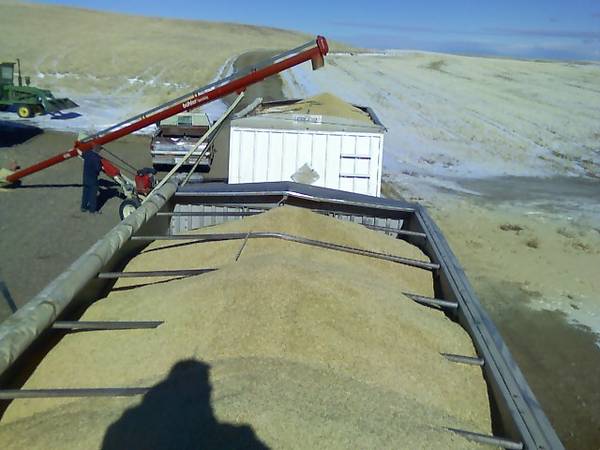rurounikitsune
Well-Known Member
- Joined
- Feb 26, 2008
- Messages
- 100
- Reaction score
- 2
Greetings all. Just joined today and have a few questions.
First off, I'm out in the sticks in lower Michigan. I have five acres that I'm going to put into barley and a few hundred square feet I'm going to put into hops.
I am going to grow beer from the ground. Specifically, I'm going for Doppelbock in the end. I'd like to lager a bunch of it over next winter. Temperatures here are perfect for it.
I have spent many days harvesting information from the Internet and from HBT. There are some things I have still not been able to figure out. I was hoping some of the knowledgable folks here can help me out; I have already tried more traditional avenues of approach and come up empty handed. Here are my questions so far:
1. Where can I get seed for two row barley? Preferably a tried and true malting variety. There are a lot of Canadian resources for this but I haven't found an American one. I don't need to go through the hassle of importing seed.
2. Is there anyone who can give step by step simple instructions for attaining a pale malt, a Munich malt, Crystal malts (20L, 40L, 60L), black patent, chocolate, etc. I will obviously be starting with living, breathing green malt and I need to be able to get the different varieties. They don't have to be spot-on perfect but I'd like to use 100% my own barley. I'm looking for something like "For Crystal 40L, roast the green malt for so-long at so-many-degrees in this kind of oven, taking care not to do this or that, and here is how it will look and smell if you've got it right." I've seen some "approximate" recipes for this but I'd like to see something with a little more specificity.
3. What is the easiest, most reliable way to malt at home with low technology? I am not going to build a machine like these folks... http://www.trash.net/~stmoser/beerbrewing_main.en.html but I do need a way to do this without molding, rotting, etc. and I don't have a concrete mashing floor.
I have already read Dan Carol's article and all the places he links from there.
http://www.bodensatz.com/upage/index.php?page=kiwibrewer_malting
I cannot afford any high dollar solutions such as "buy a real nice kiln for $$$$$." I'm a poor homebrewer!
A lot of folks discourage "beer from scratch" and home malting... I'm not here to be deterred... just please let me know if you have any pertinent advice.
Thanks
First off, I'm out in the sticks in lower Michigan. I have five acres that I'm going to put into barley and a few hundred square feet I'm going to put into hops.
I am going to grow beer from the ground. Specifically, I'm going for Doppelbock in the end. I'd like to lager a bunch of it over next winter. Temperatures here are perfect for it.
I have spent many days harvesting information from the Internet and from HBT. There are some things I have still not been able to figure out. I was hoping some of the knowledgable folks here can help me out; I have already tried more traditional avenues of approach and come up empty handed. Here are my questions so far:
1. Where can I get seed for two row barley? Preferably a tried and true malting variety. There are a lot of Canadian resources for this but I haven't found an American one. I don't need to go through the hassle of importing seed.
2. Is there anyone who can give step by step simple instructions for attaining a pale malt, a Munich malt, Crystal malts (20L, 40L, 60L), black patent, chocolate, etc. I will obviously be starting with living, breathing green malt and I need to be able to get the different varieties. They don't have to be spot-on perfect but I'd like to use 100% my own barley. I'm looking for something like "For Crystal 40L, roast the green malt for so-long at so-many-degrees in this kind of oven, taking care not to do this or that, and here is how it will look and smell if you've got it right." I've seen some "approximate" recipes for this but I'd like to see something with a little more specificity.
3. What is the easiest, most reliable way to malt at home with low technology? I am not going to build a machine like these folks... http://www.trash.net/~stmoser/beerbrewing_main.en.html but I do need a way to do this without molding, rotting, etc. and I don't have a concrete mashing floor.
I have already read Dan Carol's article and all the places he links from there.
http://www.bodensatz.com/upage/index.php?page=kiwibrewer_malting
I cannot afford any high dollar solutions such as "buy a real nice kiln for $$$$$." I'm a poor homebrewer!
A lot of folks discourage "beer from scratch" and home malting... I'm not here to be deterred... just please let me know if you have any pertinent advice.
Thanks




